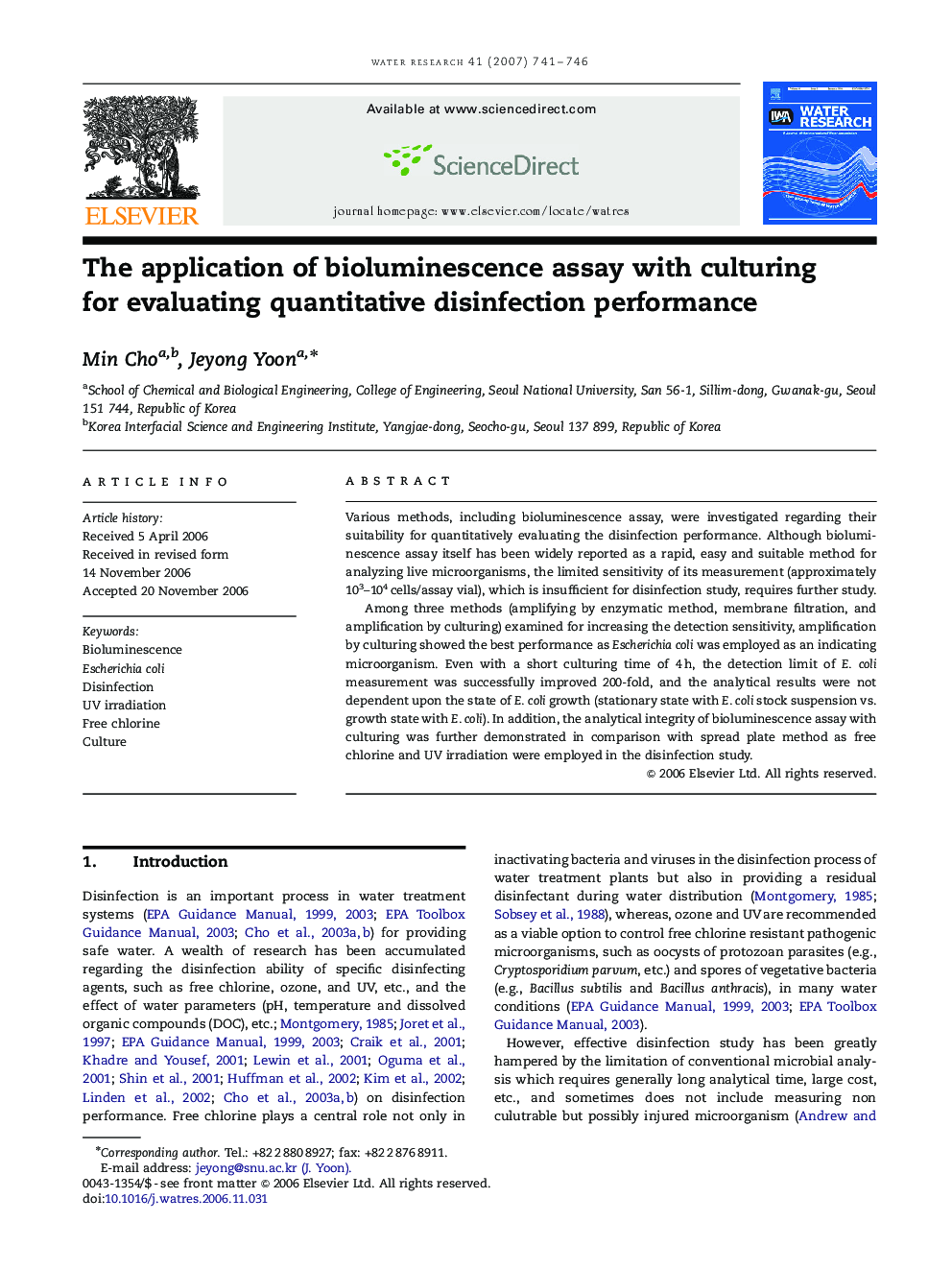| Article ID | Journal | Published Year | Pages | File Type |
|---|---|---|---|---|
| 4485532 | Water Research | 2007 | 6 Pages |
Various methods, including bioluminescence assay, were investigated regarding their suitability for quantitatively evaluating the disinfection performance. Although bioluminescence assay itself has been widely reported as a rapid, easy and suitable method for analyzing live microorganisms, the limited sensitivity of its measurement (approximately 103–104 cells/assay vial), which is insufficient for disinfection study, requires further study.Among three methods (amplifying by enzymatic method, membrane filtration, and amplification by culturing) examined for increasing the detection sensitivity, amplification by culturing showed the best performance as Escherichia coli was employed as an indicating microorganism. Even with a short culturing time of 4 h, the detection limit of E. coli measurement was successfully improved 200-fold, and the analytical results were not dependent upon the state of E. coli growth (stationary state with E. coli stock suspension vs. growth state with E. coli). In addition, the analytical integrity of bioluminescence assay with culturing was further demonstrated in comparison with spread plate method as free chlorine and UV irradiation were employed in the disinfection study.
